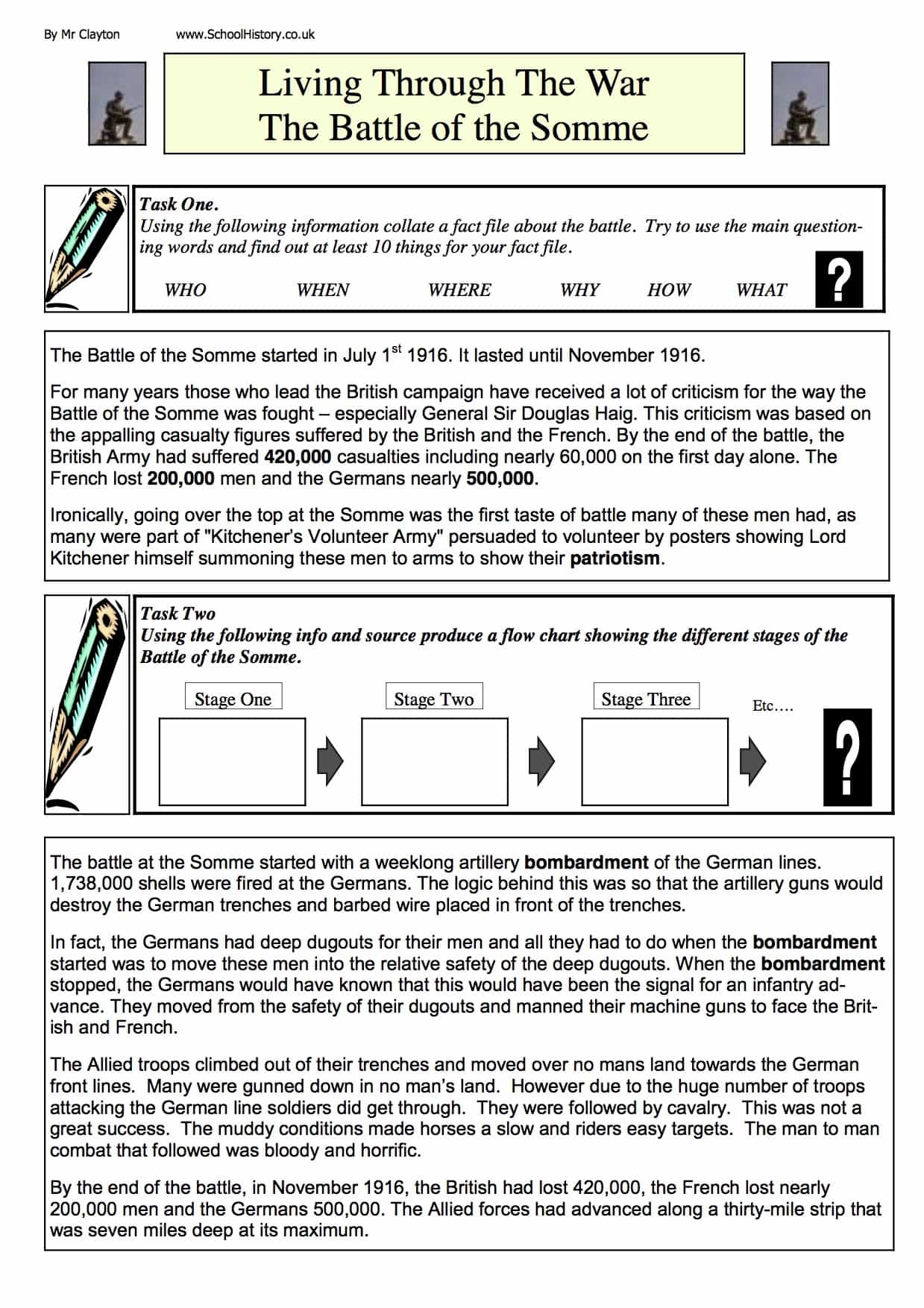Download Living Through the War: The Battle of the Somme
Click the button below to download this worksheet for use in the classroom or at home.
Download →
The Battle of the Somme started in July 1st 1916. It lasted until November 1916.
For many years those who lead the British campaign have received a lot of criticism for the way the Battle of the Somme was fought – especially General Sir Douglas Haig. This criticism was based on the appalling casualty figures suffered by the British and the French. By the end of the battle, the British Army had suffered 420,000 casualties including nearly 60,000 on the first day alone. The French lost 200,000 men and the Germans nearly 500,000.
Ironically, going over the top at the Somme was the first taste of battle many of these men had, as many were part of “Kitchener’s Volunteer Army” persuaded to volunteer by posters showing Lord Kitchener himself summoning these men to arms to show their patriotism.
The battle at the Somme started with a weeklong artillery bombardment of the German lines. 1,738,000 shells were fired at the Germans. The logic behind this was so that the artillery guns would destroy the German trenches and barbed wire placed in front of the trenches.
In fact, the Germans had deep dugouts for their men and all they had to do when the bombardment started was to move these men into the relative safety of the deep dugouts. When the bombardment stopped, the Germans would have known that this would have been the signal for an infantry ad- vance. They moved from the safety of their dugouts and manned their machine guns to face the British and French.
The Allied troops climbed out of their trenches and moved over no mans land towards the German front lines. Many were gunned down in no man’s land. However due to the huge number of troops attacking the German line soldiers did get through. They were followed by cavalry. This was not a great success. The muddy conditions made horses a slow and riders easy targets. The man to man combat that followed was bloody and horrific.
By the end of the battle, in November 1916, the British had lost 420,000, the French lost nearly 200,000 men and the Germans 500,000. The Allied forces had advanced along a thirty-mile strip that was seven miles deep at its maximum.
PDF Worksheet:
-
- Aimed at Students studying at UK GCSE or equivalent
- Free to download
- Use as you wish in the classroom or home environment
- Structured study guide and challenging questions.
